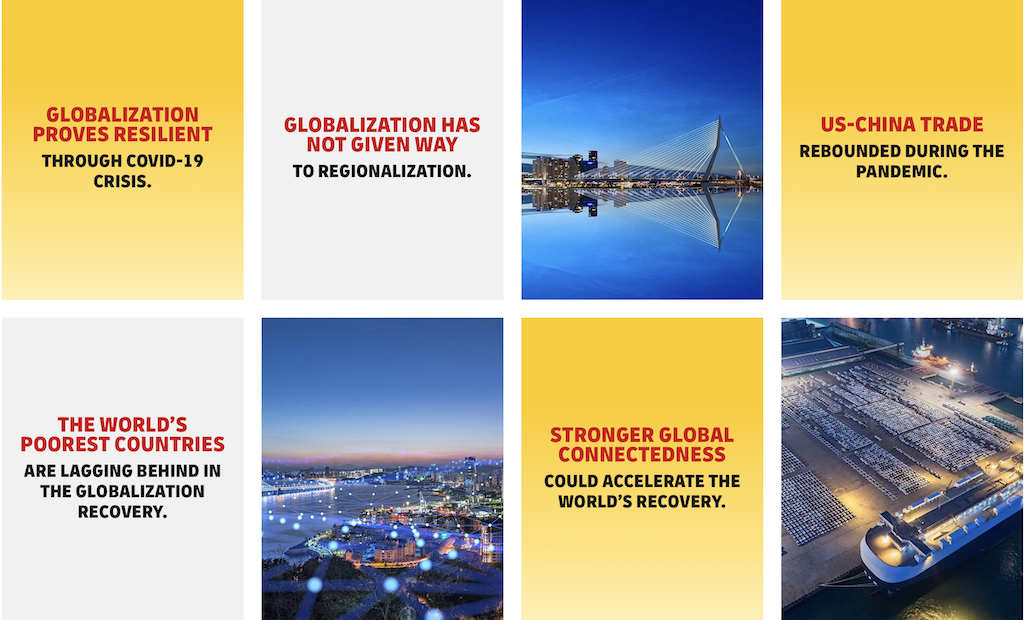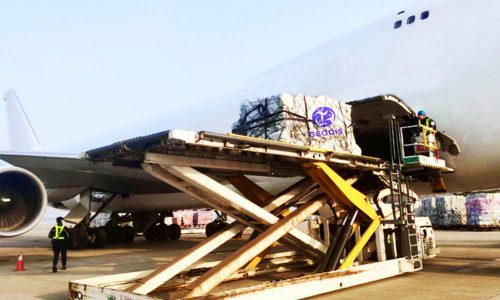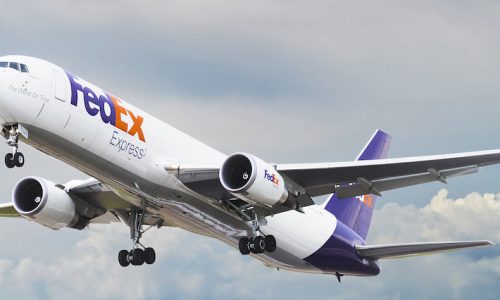- DHL Global Connectedness Index on track to rise in 2021
- Trade in goods surged to above pre-pandemic levels
- Globalization has not given way to regionalization
- Low-income countries lag behind in globalization recovery

DHL and the NYU Stern School of Business today released the 2021 update of the DHL Global Connectedness Index.
Now in its 10th year, this report provides a fresh view on the impact of the pandemic on globalization by analyzing international flows of trade, capital, information, and people. While there are different trends across types of flows, the overall DHL Global Connectedness Index just declined very modestly in 2020 and is on track to rise in 2021.
Nonetheless, the COVID-19 ‘stress test’ also revealed longstanding vulnerabilities that demand attention moving forward.
“Many feared that the global crisis would jeopardize the progress of globalization. We have been analyzing the various international flows worldwide for years and after 1.5 years of the pandemic, we can now safely assure: the pandemic has not caused globalization to collapse. After initial dips in 2020, the DHL Global Connectedness Index is already on the rise again this year,” says John Pearson, CEO DHL Express.
“Trade has provided a lifeline for countries around the world, and DHL Express has played a key role in areas ranging from vaccine distribution to e-commerce.”
International flows of trade, capital, information, and people were affected in different ways by the pandemic
After steeply plummeting early in the pandemic, trade in goods rebounded to above its pre-pandemic level before the end of 2020.
Global trade in goods has set new records in 2021. Foreign direct investment flows shrunk even more than trade in 2020, but they are on track for a full recovery in 2021.
International data flows surged in 2020 as in-person interactions went online, but this did not break a longer-term slowdown in the globalization of information flows.
Finally, international flows of people were hit the hardest by the pandemic, and they are recovering slowly. International travel fell 73% in 2020, but there are glimmers of a recovery starting in mid-2021.
“The resilience of global flows is good news, because a connected world offers the best prospects for a strong and sustainable recovery from the COVID-19 pandemic. When a crisis strikes, many of us naturally feel a strong impulse to hunker down behind borders,” says Steven A. Altman, Senior Research Scholar and Director of the DHL Initiative on Globalization, NYU Stern
“But the more extreme the challenge, the more urgent it becomes to draw upon the best ideas and resources from at home and abroad.”
“The robust global trade flows and economic recovery continue to create growth opportunities in the Asia Pacific, with Asia’s merchandise exports and imports volumes expected to grow to 14.7% and 9.4% respectively above its 2019 level in 2021.
Said Ken Lee, CEO, DHL Express Asia Pacific: “As the Regional Comprehensive Economic Partnership comes into effect in January 2022, it will contribute to greater global connectedness, economic recovery, and prosperity for the region.
“While global trade continues on its upward trajectory, our commitment to investing about EUR750 million to bolster our ground infrastructure and air network in the Asia Pacific between 2020 and 2022 will ensure we can cater to the increasing demand for express logistics services and support our customers’ aspirations to extend their global footprint.”
The surge of international trade since mid-2020 far surpassed initial forecasts, even as the mix of goods traded changed more than usual. Trade in goods used to fight the pandemic soared while trade in many other products declined.
Meanwhile, contrary to expectations that the pandemic would cause a shift to more regionalized trade, trade in goods took place over longer distances, on average, in 2020. Data on capital, information, and people flows also show no clear evidence of a shift underway from globalization to regionalization.
The world’s poorest countries, meanwhile, are still lagging behind in the globalization recovery. Even as global trade was setting new records in early 2021, the countries with the lowest per-capita incomes were still trading less than they did in 2019.
Likewise, foreign direct investment into low-income countries fell over the same period, while it grew strongly in middle- and high-income countries. The world’s poorest countries are still dangerously disconnected, and stronger links to the wider world could help accelerate their recoveries from the COVID-19 pandemic.

